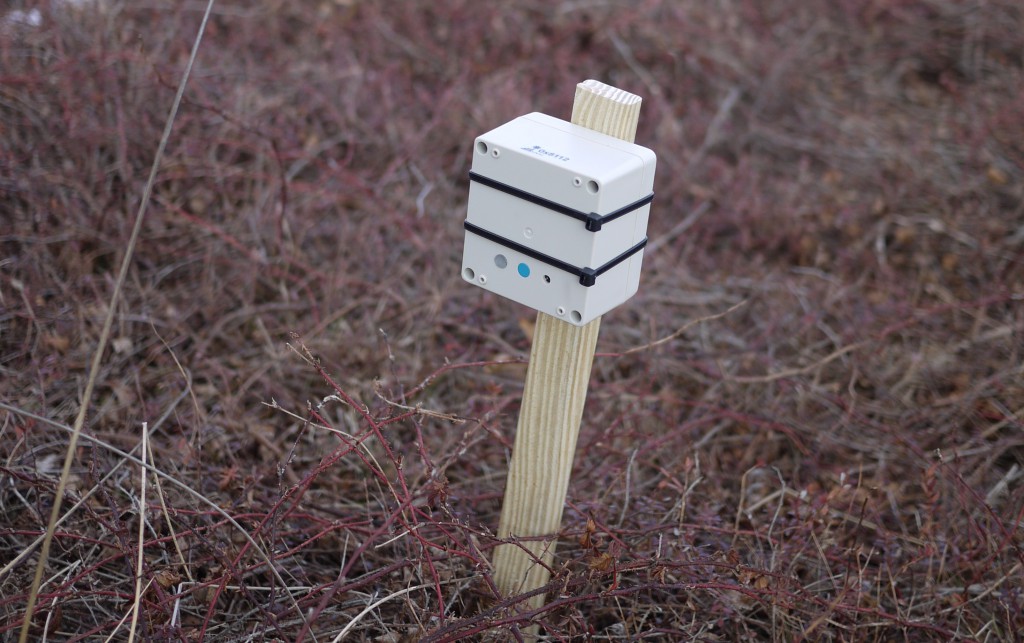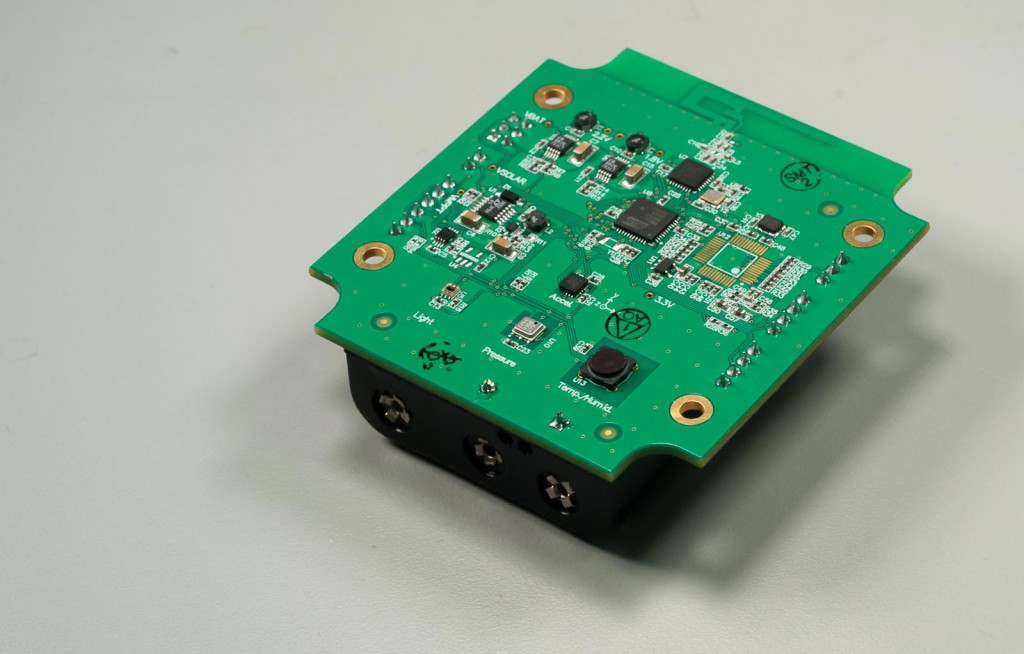
The Tidmarsh sensor node is a low-power wireless sensing platform that we have developed primarily for the Tidmarsh project. It contains an 8-bit microcontroller, 802.15.4 wireless, and a basic set of environmental sensors. It is designed to run for several years from non-rechargeable batteries, reporting sensor data several times per minute. For sensors with higher power requirements, the sensor node also contains a solar battery charger that can be attached to an external panel.
The sensor node also has I/O capability for attaching additional sensors and devices.

Hardware Specifications
CPU: ATxmega128A4U
- 8/16-bit AVR core
- 128K program memory
- 8K RAM
- 2K EEPROM
- Real-time clock
- 12-bit A/D
Wireless: AT86RF231
- 802.15.4 PHY/MAC
- +3 dBm transmit
- -101 dBm receiver sensitivity
- omnidirectional on-board inverted-F 2.4GHz antenna
- external antenna via U.FL connector
Environmental Protection
- 3x3x2 inch watertight enclosure (IP-65 rated)
- gray ABS, stainless screws
- IP-67 filter membrane for RH sensor
- Gore-Tex membrane for barometer
- water-resistant circular connectors for external sensors
Power
- 3xAA cells, either alkaline or nickel-metal
- alternatively, 3.7V lithium polymer cell via JST connector
- maximum power point tracking (MPPT) solar charge controller (LT3652)
- 2.2V system voltage
- optional 1.8V/3.3V power domains for audio codec
Sensing
- Analog Devices ADXL362 micropower accelerometer
- Bosch Sensortec BMP180 barometric pressure sensor
- Sensirion SHT21 high-resolution temperature/humidity sensor
- Intersil ISL29023 high dynamic range ambient light sensor
Expansion/Connectivity
- Aux 1 connector (4-pin .100 Molex KK connector)
- 3-4.5V battery voltage
- 2 A/D capable GPIO pins
- Aux 2 connector (4-pin .100 Molex KK connector)
- 3 A/D capable GPIO pins
- Solar/Aux Power (2-pin .100 Molex KK connector)
- 3.5V to 15V (overvoltage protected) input for solar panel or other charging source
- This is an optional connection; only required for repeater nodes and audio nodes
- Serial (6-pin .100 Molex KK connector)
- I2C sensor bus
- requires population of jumpers (disables FTDI compatibility)
- asynchronous serial
- compatible with FTDI header pinout
- configurable power pin, options:
- sensor node provides 3.3V via linear regulator; serial I/O is 3.3V
- sensor node provides 2.2V via main switching regulator; serial I/O is 2.2V
- power pin is input; external device supplies serial reference voltage between 1.8 and 5.5V
- I2C sensor bus
- Mic
- optional differential microphone input for audio codec; 3.3V biased for electret capsules
- PDI programming interface
- Program/Debug interface connector for main MCU
Audio Codec
- VS1063 audio codec
- MP3 or Ogg VBR encoding
- integrated microphone preamplifier
- programmable DSP